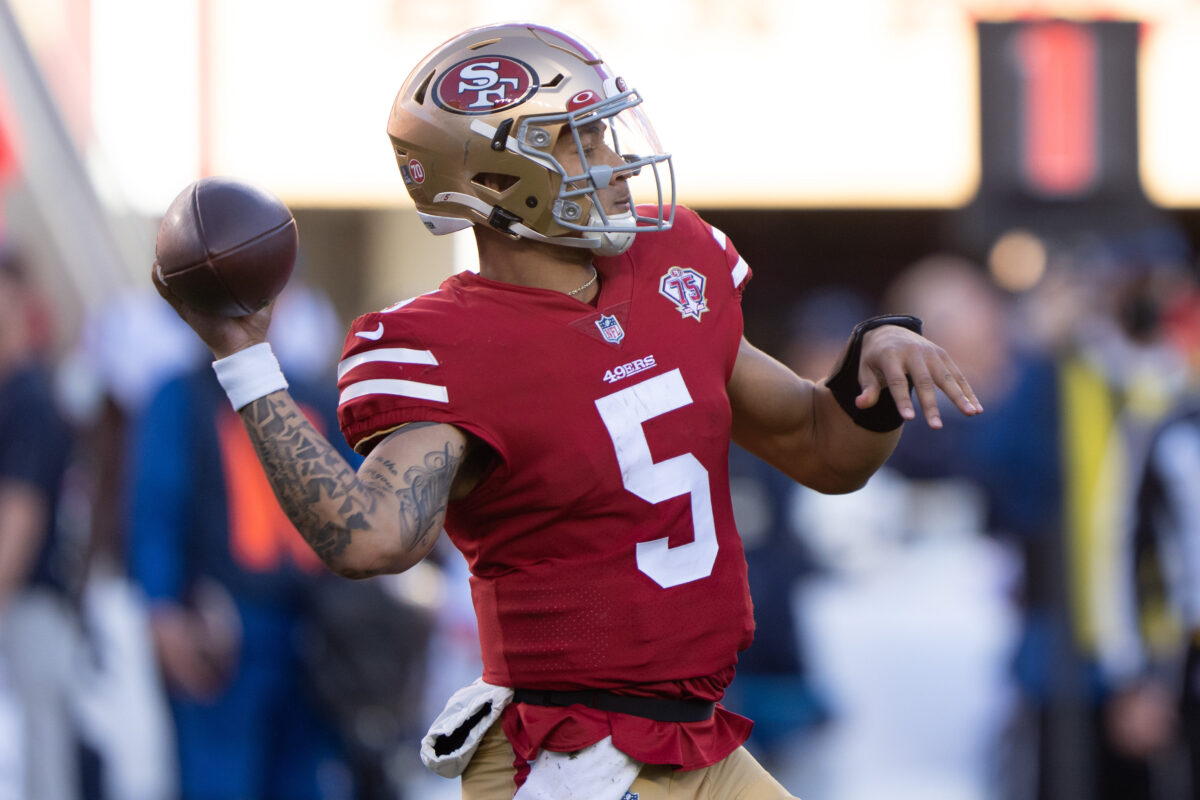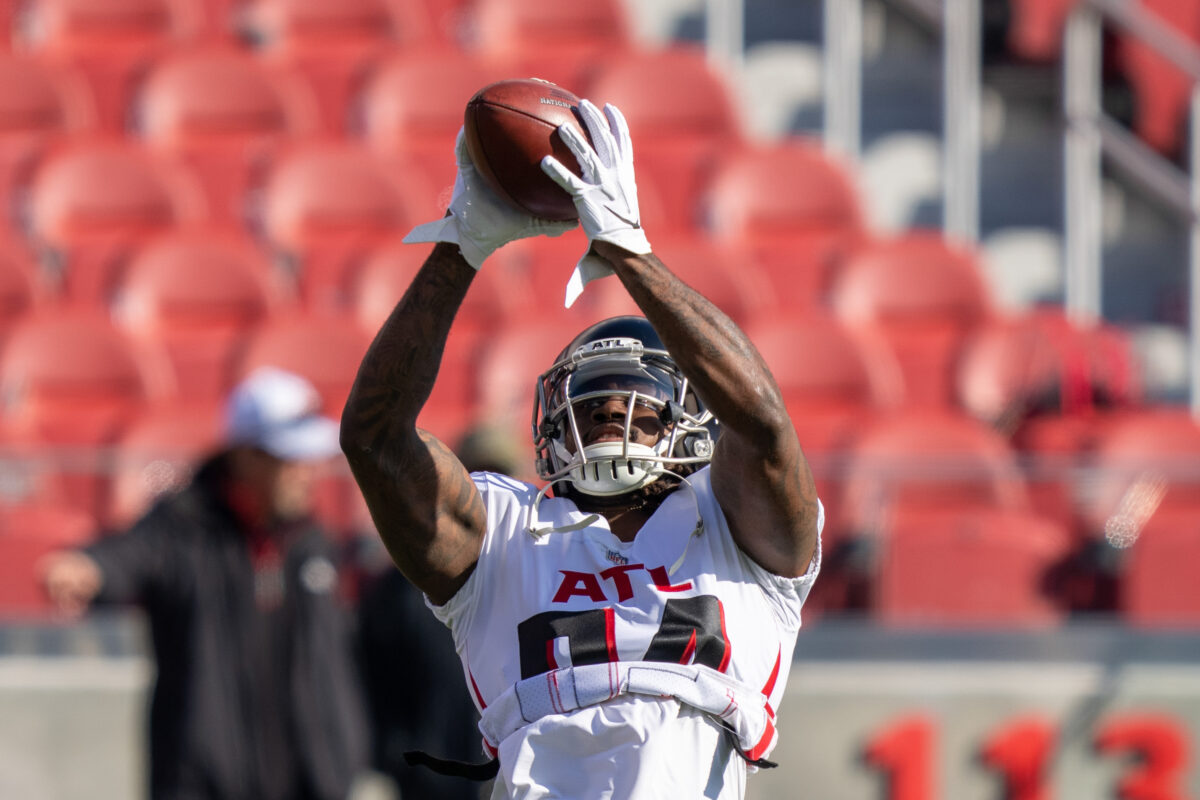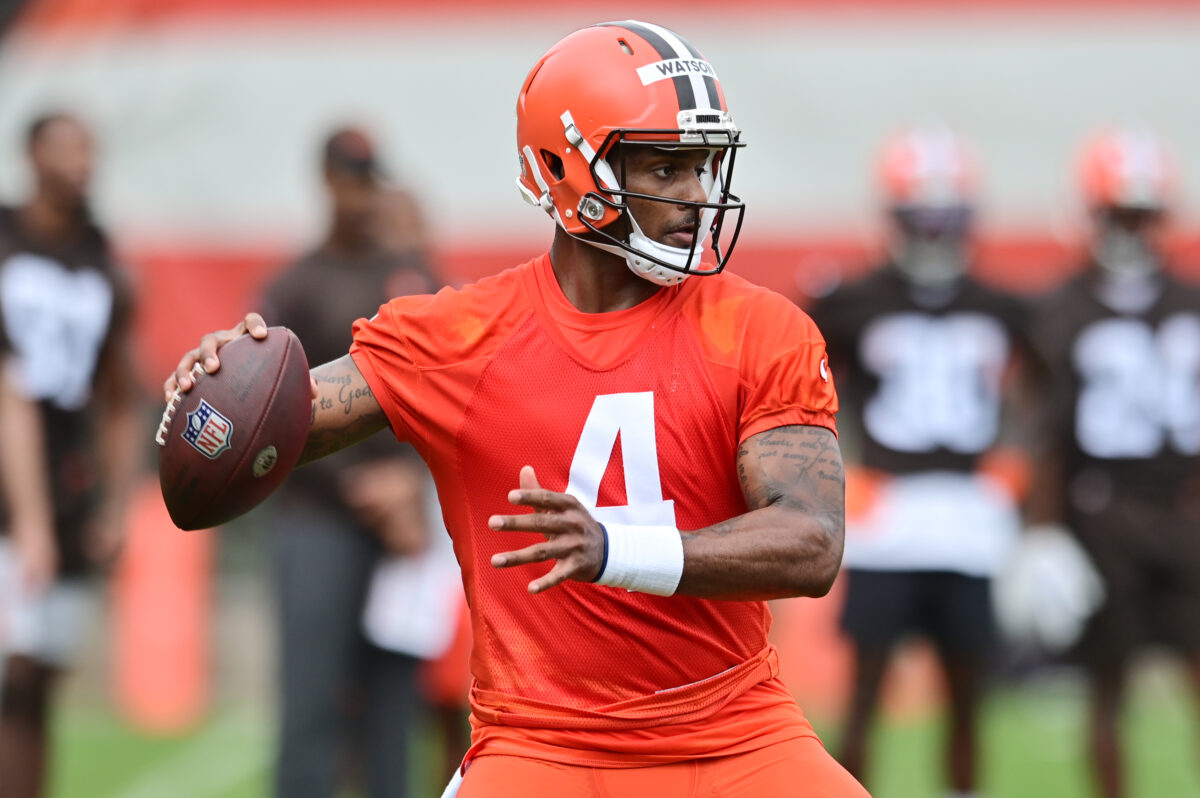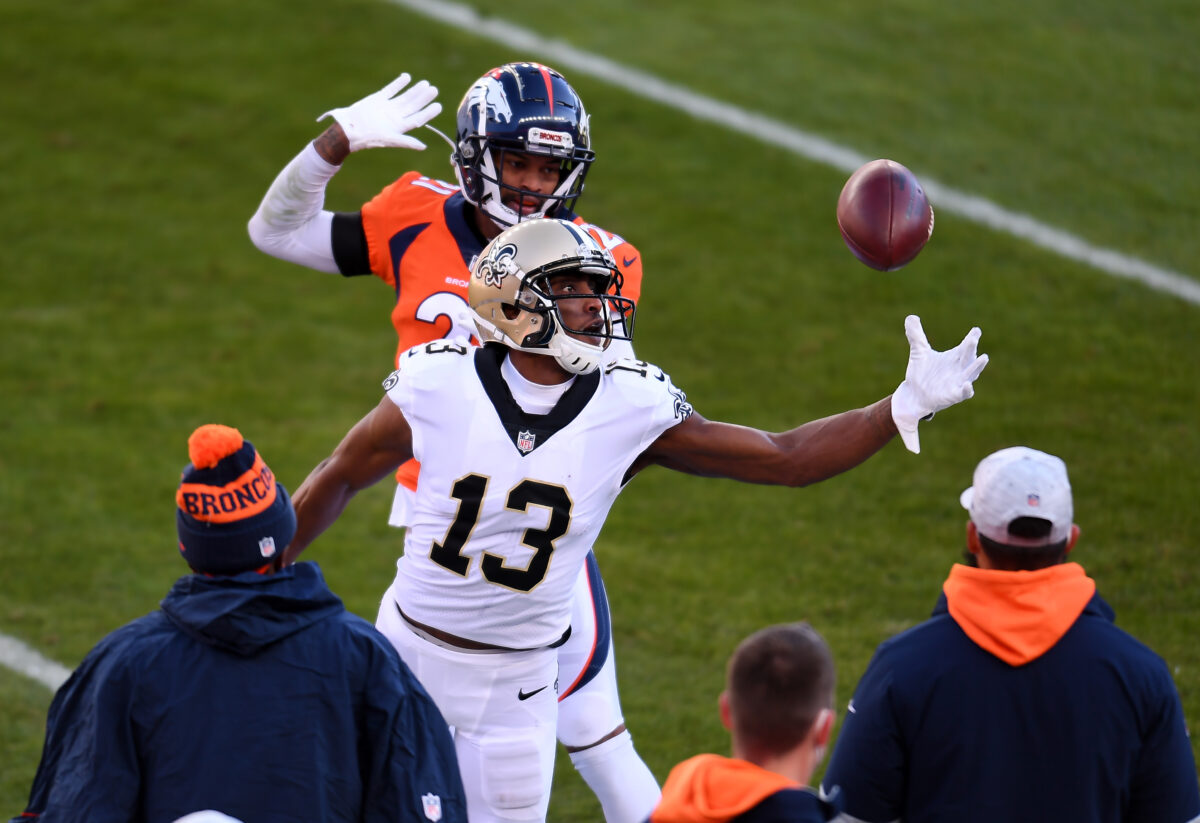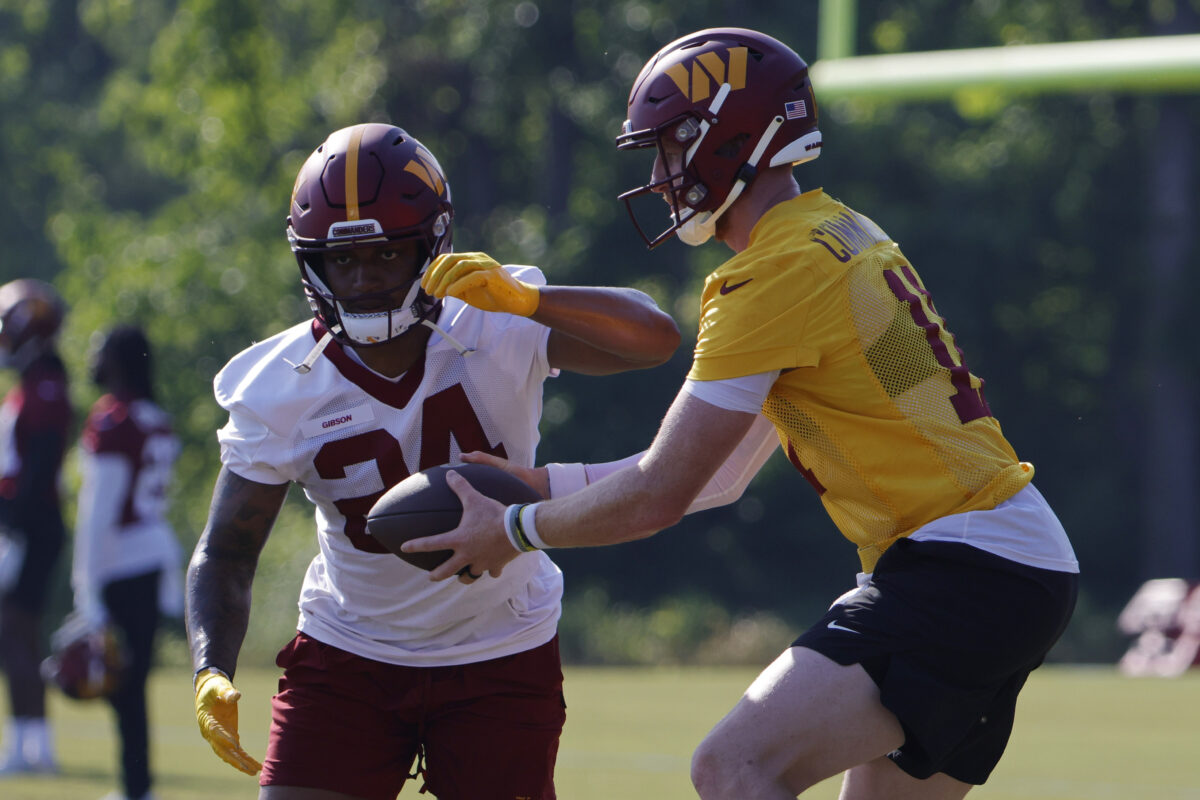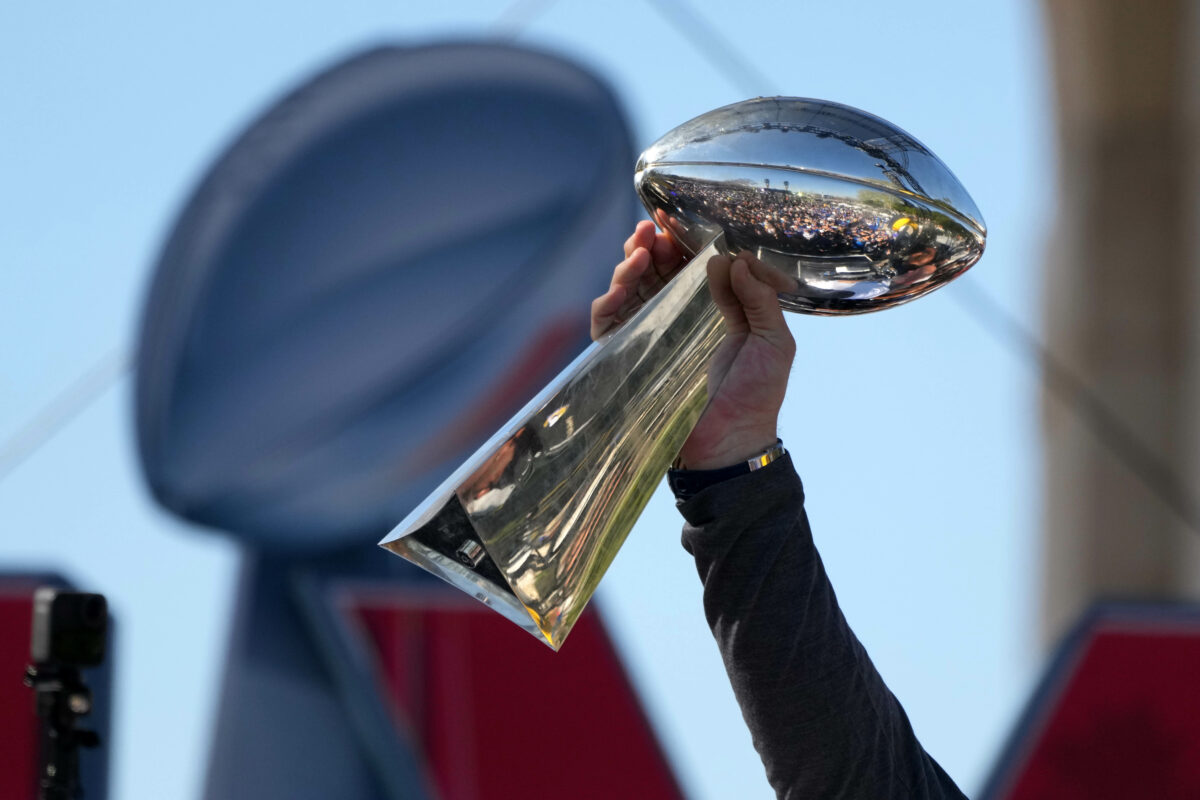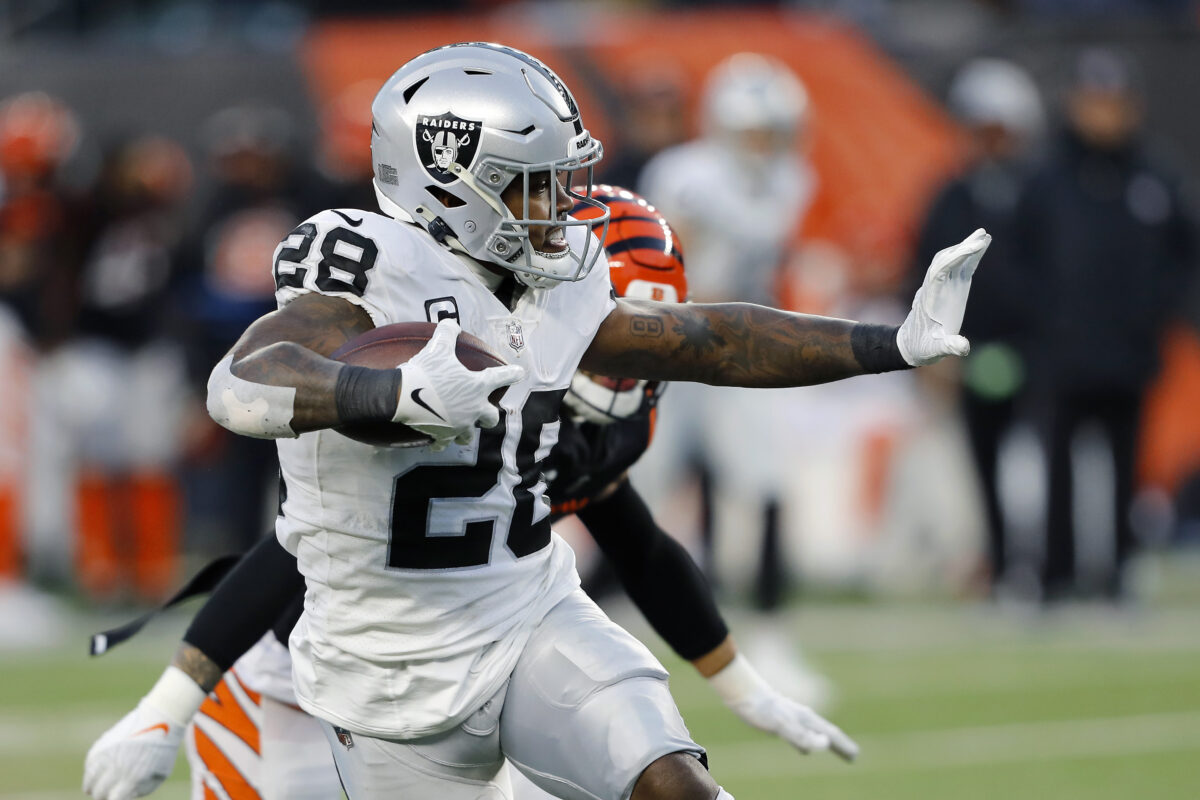While 2022 was a noteworthy exception, a typical NFL draft is dotted with quarterbacks at the top who are given the “can’t miss” tag. In 2021, there were more than usual. The top three picks went quarterback, and two more joined in over the next 12 picks.
To the surprise of many, it wasn’t Trevor Lawrence, Zach Wilson, Trey Lance or Justin Fields who made the biggest rookie splash. It was Mac Jones and Davis Mills who led the QB Class of 2021.
Given the quick ascent of 2020 rookies Joe Burrow and Justin Herbert (and, to a lesser extent, Tua Tagovailoa and Jalen Hurts), the timetable for a young franchise quarterback to produce is getting shorter.
We take a deep dive on the six quarterbacks in question and their selling points to make a jump in their fantasy value in Year 2.
Trevor Lawrence, Jacksonville Jaguars
Lawrence was the first overall pick in 2021 and widely hailed as the best quarterback to come to the NFL since Andrew Luck. Surrounded by a brutal supporting cast and mired by a coaching disaster, he threw just 12 touchdowns against 17 interceptions.
- After throwing seven interceptions in his first three games, he didn’t throw a pick in nine of the final 14.
- He completed just 59.6 percent of his passes, but in his last three games, Lawrence completed 66 of 98 passes (67.3 percent).
- He showed some ability as a scrambler, rushing five or more times in eight games and finishing second on the team with 334 rushing yards.
- Jacksonville gave him more explosive weapons to work with this offseason, adding speedy wide receivers Christian Kirk and Zay Jones to join Marvin Jones and Laviska Shenault, as well as adding TE Evan Engram.
- The Jaguars addressed its porous offensive line, adding veteran guard Brandon Scherff and drafting center Luke Fortner (third round).
Zach Wilson, New York Jets
Wilson came to the NFL to a relatively barren cupboard of offensive playmakers. As the season progressed, he became a better game manager after taking too many risks early. He learned quickly the wide-open style at BYU doesn’t necessarily translate to the NFL.
- After throwing 11 interceptions in his first eight games, he had none in his final five starts.
- He showed some ability as a situational runner, scoring four rushing touchdowns in his final seven games.
- Wilson possesses all the intangibles a quarterback needs, including accuracy, decision-making, and the ability to make plays when they break down.
- The Jets were ravaged by WR injuries last season with free agent signee Corey Davis missing eight games and Elijah Moore missing six. If the top receivers are healthy, Wilson’s numbers will climb.
- New York invested a first-round draft pick on Garrett Wilson, a tremendous route runner who can play inside or outside and provides another weapon.
Tired of losing your league every season? Be sure to sign up for The Huddle today to gain an award-winning edge on the competition! We have 26 years of experience online building fantasy football champions.
Trey Lance, San Francisco 49ers
The 49ers made the bold climb to No. 3 in the 2021 draft for Lance, who made just 17 starts at North Dakota State. He’s expected to be the starter, but if Jimmy Garoppolo (shoulder) isn’t traded, there will be a legitimate competition on a team with legitimate Super Bowl aspirations.
- Lance is the biggest unknown among the quarterbacks at the top of the Class of 2021.
- The best pure athlete of the group with a combination of size, arm strength and speed
- Has the best supporting cast of any of these six QBs
- He threw five touchdowns on just 71 passes and in his two starts ran 24 times for 120 yards.
- Lance plays in an offense that runs the ball effectively and takes the pressure off the quarterback more than most offenses.
- Two significant changes to the interior offensive line could become a negative factor
Justin Fields, Chicago Bears
Fields was supposed to be given time to learn before replacing Andy Dalton. Dalton was injured in Week 2 and Fields was thrown into the fire. He showed incredible skill throwing on the run but had far too many disastrous throws that often negated his positives.
- In his first three starts, he threw 57 passes, completed 29 with one touchdown. In his last two starts, he threw 72 passes, completed 44 with three TDs.
- He averaged almost six yards per rushing attempt and posted 103 rushing yards against San Francisco and 74 against Green Bay.
- Gets a revamped receiver corps, including Byron Pringle, Equanimeous St. Brown, Tajae Sharpe and Dante Pettis to go with Darnell Mooney. This group will learn and grow together under a first-year head coach (Matt Eberflus) as well as a rookie offensive coordinator in Luke Getsy (modified West Coast).
- He has no competition … unless you consider journeyman Trevor Siemian competition.
- He plays in what many consider the weakest top-to-bottom division in the NFC.
Mac Jones, New England Patriots
Jones was the fourth quarterback taken, but when Cam Newton was cut after the preseason, it was Jones’ team. A year into the Patriots system, Bill Belichick has his protege ready to take his next step.
- Led all rookie quarterbacks with 3,801 passing yards, 22 touchdowns, a 67.6 completion percentage, and a 92.5 passer rating
- He completed 70 percent or more of his passes in nine games.
- He’s never been a runner, so his focus on improving his game is solely on passing.
- He has all of his primary receivers back from last year, plus James White returning from a season-ending hip injury and DeVante Parker entering as a new weapon.
- The Patriots coaching staff has a penchant for calling plays that keep a quarterback safe and not taking unnecessary risks. There’s no clear offensive play-caller with Josh McDaniels now the head coach in Vegas, but the system isn’t expected to change much, if at all.
Davis Mills, Houston Texans
Davis was intended to be the No. 3 guy in Houston, but with Deshaun Watson out and Tyrod Taylor hurt, he started 11 games, throwing for 2,664 yards with 16 touchdowns, 10 interceptions and passer rating of 88.5.
- He has no competition with Watson and Taylor gone.
- In his first nine games (seven starts), he had eight touchdowns and four interceptions. In his last four starts, he produced eight touchdowns vs. two interceptions.
- Mills logged four 300-yard passing games – most among the 2021 class.
- Houston has what could be the worst run game in the league and a leaky, which forces passing.
- The Texans have cobbled some receiver depth with Brandin Cooks, Chris Conley, Nico Collins, Phillip Dorsett, Chris Moore and rookie John Metchie III.
Fantasy football outlook
There isn’t a player in this group who is likely to ascend to QB1 status (a top 12 fantasy player), but they’re all in the QB2 range with varied levels of upside.
- Although he likely has the lowest ceiling, right now Jones has the highest floor and should have the top ranking.
- Fields checks in at No. 2 because of the schedule he faces and lack of competition in Chicago. He will need to get the most of his weaponry, however, and is the riskiest of the top three.
- The addition of speed receivers moves Lawrence up to No. 3 but not to the top spot yet.
- Wilson is No. 4, because the Jets are still a year away from having an offense that clicks.
- Lance slips in at No. 5 because, like Herbert and Burrow, comes to a team with offensive weapons, but needs Jimmy G gone to solidify his value.
- Davis (again) is No. 6, but by season’s end he may be the most impressive (again).
It wouldn’t be a total surprise if Lance finishes as the No. 1 of this group, nor would it be a shocker if Lawrence ended up there, either. Both need a few breaks to go their respective ways before we’re comfortable making such a prediction. We’ll keep tabs on these situations as training camp provides more clarity on some of the unsettled scenarios.
